How did you get into journalism?
I started reading and writing at a very young age. I wrote short stories, kept journals, reported my daily life on a daily basis. I got some of my work published with a local newspaper and a local magazine a few years back, and a poem I wrote won a national contest in the US. I also started blogging when I was a student at Chelsea College of Art and Design and started to develop my writing there. I worked with many editors and writers after university and started to write for publications like Prim Magazine and Borderline in NY and Style Bazaar in London. Right now I still consider myself a journalist in a sense that through Sketchbook I assign stories to my writers, and keep the ‘reporting’ bit in check.
Describe the concept of Sketchbook Magazine.
Sketchbook is a new quarterly magazine that showcases established and emerging creative talents in fashion, design and culture with a focus on features, photography and illustration. Featuring original sketchbook graphics, exclusive interviews with scientists in jelly and photographers in Africa, We present our finds in a raw and exposed fashion. In Sketchbook, it’s not just about the product itself, but also about the beauty of the process of conceptualization, creation and appreciating the means to an end. Sketchbook aims to provide an entrance into the minds of switched-on, aware and intelligent creative’s and inspire those who wish to be part of such an innovative industry. I wanted to create a publication rich with mood boards, illustrations, and bursting with ideas. I wanted it to be edit-free and advertise-less and full of workshops and spaces.
The design is very glam, how did you decide on the art design of the publication?
The design for the first issue is very clean and straight forward which is still not how I envision Sketchbook. I want to do Sketchbook justice and really embrace the rawness, cuts, tears, look and feel of a sketch book. I am really looking to create an unconventional magazine free of guidelines, I want Sketchbook to explore different themes and styles in each issue, and try to get closer to what a sketch book really is, or try to explore the concept of a sketch book in each theme.
Who is behind Sketchbook Magazine?
I started masterminding Sketchbook Magazine a year ago, so I was on my own for a while. I accumulated all the illustrators, designers, etc that I wanted to collaborate with. Features editor, Luma Bashmi joined six months later and she is my right hand person, overseeing the quality of all the features, does all the proof-reading and helps me run the whole Sketchbook brand (from Sketchbook TV, the magazine, the blog). Ekaete our content manager is our full time staffer and one of the core members of the magazine.
There are four full time staffers working with me and Luma at Sketchbook quarters, we have eight part- time interns who come in to write, report or blog for Sketchbook Magazine. 150 people have been involved with the first issue and 200 for the second issue. We also have a 15 member film crew made up of Komal Verma the executive producer of the webispodes, and Jospeh Salmassian who is our producer, and the rest are technicians, and sound editors. But overall we have about 500 members of the Sketchbook network. I like to think of it as a huge family.
Describe a day in the life of Wafa Alobaidat.
A day in my life consists of the following: Waking up at 9.30am, getting dressed (usually in something comfy and converse), cleaning up the studios, having breakfast (which is now becoming two cups of lemon and ginger tea and some fruit), and then everyone starts showing up at 10.30am. I usually start with checking the Sketchbook website, the blog, our sales through magcloud.com, our Twitter pages and start replying to anyone who has left any responses, and updating statuses. I then start going through my email (which takes me forever) and I start forwarding emails to Fiona Gandy, our press officer, and content for the next issue to Ekaete Inyang, my content manager. There is usually a list of to do’s to go through, writing up proposals, getting back to distributors and printers. Meanwhile everyone at the office is blogging, chasing up stories and planning events. We break for lunch at around 1pm. Luma and I used to cook for staffers which was really fun but the group just got so much bigger and we had to stop. We still make brownies when we can and there is plenty of choc and junk foods to snack on in the kitchen. We usually work till about 6.30pm, even though I tend to stay on the computer way longer than that. But every day is interesting - we always send our bloggers and writers to cover last minute events and sometime we find ourselves scrambling to get in touch with our TV crew who have to get to a location usually to interview an A-list designer in a matter of hours. Luma and I try to meet at least five designers a day to look through their portfolios and to commission new work. Every day is exciting and I love it. The best days are when we get to meet interesting people in the industry, or look through a great portfolio, and hopefully we still have time to go out and meet friends at night for some dinner, or invite them over for coffee and cake.
Which blogs do you check out regularly?
What magazines do you read?
I read Dazed and Confused, Interview, POP, Love, Another Magazine, Another Man, Fantastic Man, Vogue UK, Crash, Evening Standard Magazine, Wallpaper, Monocole, Grafik, Amelia’s Magazine, Lula and Prim Magazine.
What tips do you have for anyone who wants to become a magazine editor?
It’s a full time job getting the first issue together - I had no life in the first six months of putting the magazine together. You have to really be able to sell the idea to contributors and potential editors, so constantly being enthusiastic and positive about the project is a must. You can’t do it alone, you have to delegate responsibilities to people you trust who share your vision of the product. You must find a space to meet with your team and create a hub for activity whether it’s your living room or university library. You must be able to meet with people you want involved with the magazine. Have a unique selling point for your magazine – for Sketchbook magazine it’s the fashion illustrations, and blogger profiles that differentiate us from other magazines. Think digital – you have to be able to have a huge web presence to exist as a publication. Take advantage of media networks like Twitter, Facebook, Ping, Ying, Google Wave. Create blogs, update them regularly, upload your magazine onto issuu to gain a readership and following. There are so many exciting online ventures that you can get your magazine in. You can now buy Sketchbook as a book from Lulu.com, and buy a PDF of the magazine through e-junkie and Exact Editions.
You can buy a copy of Sketchbook Magazine here.
You can read Wafa's blog here.
You can follow her on Twitter here.
You can buy a copy of Sketchbook Magazine here.
You can read Wafa's blog here.
You can follow her on Twitter here.













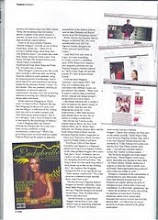
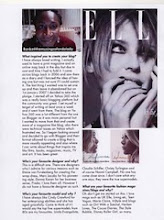
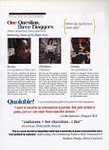
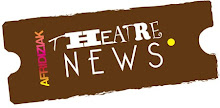
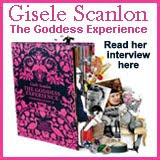









0 cool comments:
Post a Comment